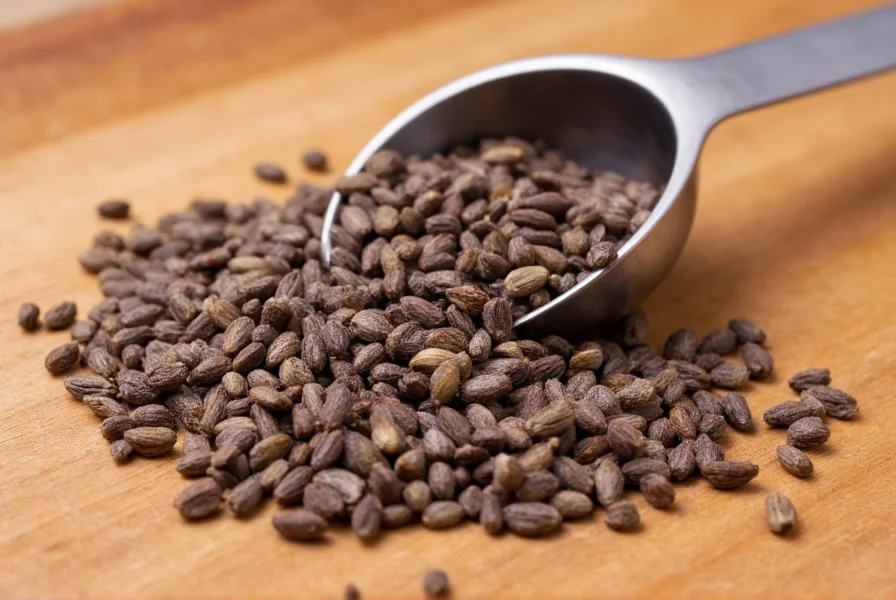Anise has been valued for thousands of years for its unique flavor profile and therapeutic properties. This annual plant grows to approximately 2 feet tall and produces small white flowers that develop into the familiar crescent-shaped seeds. The primary compound responsible for anise's characteristic taste is anethole, which also appears in fennel and star anise but in different concentrations.
Botanical Characteristics and Origins
Native to the eastern Mediterranean and Southwest Asia, anise thrives in warm climates with well-drained soil. The plant's scientific name, Pimpinella anisum, derives from the Italian word “pimpinello,” meaning “weak” or “delicate,” likely referencing its slender stems. Unlike star anise (Illicium verum), which comes from a completely different plant family, true anise belongs to the same botanical family as carrots, parsley, and celery.

Historical Significance and Cultural Meanings
The anise meaning extends far beyond its culinary applications. Ancient Egyptians included anise seeds in burial preparations, while Romans used them to make spiced cakes served at the end of feasts—the origin of the phrase “sweetening the breath.” In medieval Europe, anise symbolized remembrance and was often incorporated into wedding ceremonies. The plant's reputation as a digestive aid led to its inclusion in traditional liqueurs like ouzo, absinthe, and anisette across Mediterranean and Middle Eastern cultures.
Culinary Applications Worldwide
Understanding anise meaning requires examining its global culinary role. In Mexican cuisine, anise flavors traditional atole and champurrado beverages, while Indian recipes incorporate it into spice blends like panch phoron. The distinctive flavor profile makes it essential in Mediterranean fish dishes, Middle Eastern breads, and Scandinavian pastries. When exploring anise seed meaning, it's crucial to distinguish it from similar spices:
| Spice | Botanical Source | Flavor Profile | Common Uses |
|---|---|---|---|
| True Anise | Pimpinella anisum (Apiaceae) | Sweet, delicate licorice | Baking, liqueurs, Mediterranean cuisine |
| Star Anise | Illicium verum (Schisandraceae) | Stronger, more pungent licorice | Chinese five-spice, pho broth, mulled wine |
| Fennel Seed | Foeniculum vulgare (Apiaceae) | Milder, sweeter, herbal notes | Italian sausages, Indian spice blends, digestive teas |
Medicinal Properties and Traditional Uses
Traditional medicine systems have long recognized anise meaning beyond flavoring. Ancient Greek physicians prescribed anise tea for digestive issues, while Ayurvedic practitioners used it to alleviate respiratory conditions. Modern research confirms that anethole possesses antimicrobial and anti-inflammatory properties. Many cultures continue using anise seed benefits for soothing coughs, improving digestion, and as a galactagogue to increase milk production in nursing mothers.
Differentiating Anise from Similar Spices
One of the most common points of confusion in understanding anise meaning involves distinguishing it from star anise and fennel. While all three share the characteristic licorice flavor due to anethole, they come from different plant families and have distinct chemical profiles. True anise seeds are smaller and more delicate in flavor than star anise pods, which contain shikimic acid used in Tamiflu production. Fennel seeds, though visually similar, have a sweeter, more herbal profile and lack the intense warmth of true anise.

Modern Applications and Sustainability
Today, anise meaning continues to evolve with contemporary applications. The essential oil finds use in natural pest control, while food scientists study its potential as a natural preservative. Sustainable cultivation practices have become increasingly important as demand grows for organic anise seeds in health-conscious markets. Understanding the complete anise seed meaning requires recognizing both its historical significance and modern relevance in our global food system.
Frequently Asked Questions
What is the difference between anise and star anise?
True anise (Pimpinella anisum) comes from a herb in the carrot family and produces small, crescent-shaped seeds. Star anise (Illicium verum) is the star-shaped fruit of a completely different tree in the magnolia family. While both contain anethole giving them licorice flavor, star anise has a stronger, more pungent taste and contains shikimic acid used in pharmaceutical production.
Is anise safe for everyone to consume?
Anise is generally safe when consumed in typical food amounts. However, people with estrogen-sensitive conditions should use caution as anise contains compounds with mild estrogenic effects. Those allergic to plants in the Apiaceae family (like carrots or celery) may experience reactions. Pregnant women should consult their healthcare provider before consuming medicinal amounts.
What are the primary health benefits of anise seeds?
Anise seeds contain anethole, which has demonstrated antimicrobial, anti-inflammatory, and antioxidant properties. Traditional uses include soothing digestive issues, relieving coughs and respiratory conditions, and potentially supporting lactation in nursing mothers. Modern research continues to investigate these traditional applications while exploring new potential health benefits.
How should I store anise seeds to maintain freshness?
Store anise seeds in an airtight container away from light and heat. Properly stored in a cool, dark cupboard, they'll retain optimal flavor for 2-3 years. For extended storage, keep them in the freezer where they can maintain quality for up to 4 years. Whole seeds preserve their essential oils better than ground anise, so grinding them just before use yields the best flavor.











 浙公网安备
33010002000092号
浙公网安备
33010002000092号 浙B2-20120091-4
浙B2-20120091-4